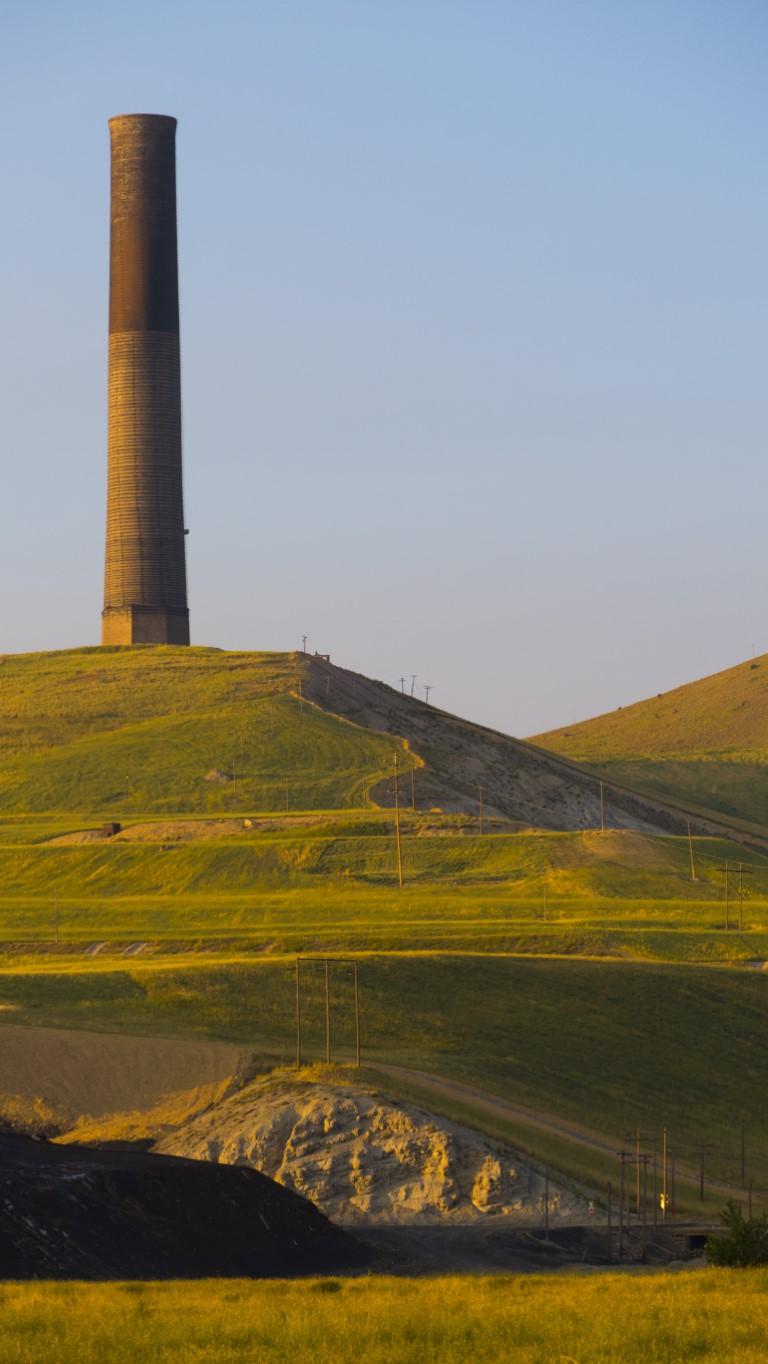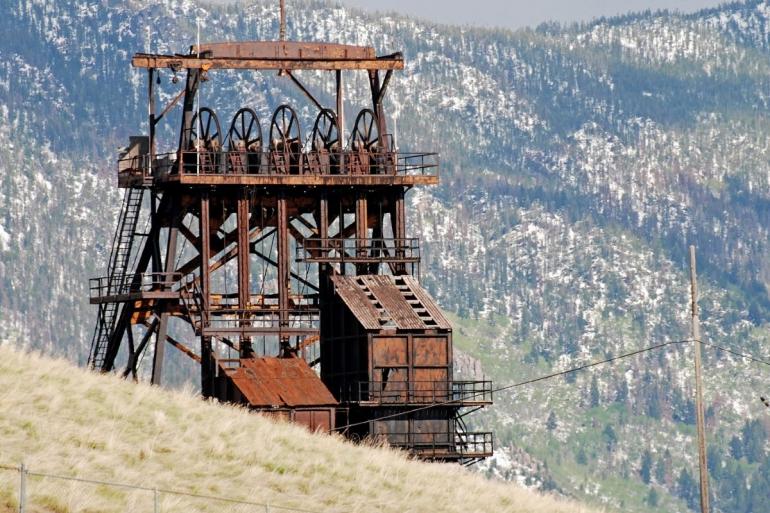Superfund Sites and the Complicated Legacy of Mining

Mining has shaped the Montana we know and love today. If you have visited her ghost towns, been to a St. Patrick's Day in Butte, Montana, or seen the Anaconda smelter towering over the landscape from the highway, then you know Montana would not be what it is now without the mining industry. Mining quite literally put Montana on the map.
Yet, it is impossible to talk about Montana's mining history without acknowledging that many of the industry's legacies have left painful, dark marks on the Montana land and Montanans. The Berkeley Pit comes first to mind — Butte's infamous and oddly beautiful tourist site, featuring silent lookout points across a watery expanse of heavy metal-laden acidic water so deadly a fleet of warning cannons were installed to prevent birds from landing and dying on the placid surface of one of the most toxic sites in the nation.
Montana is home to a whopping 17 federal Superfund Sites. Superfund, or Comprehensive Environmental Response, Compensation, and Liability Act (CERCLA), was established in 1980 to allow the Environmental Protection Agency to clean up contaminated, toxic sites around the United States while forcing responsible parties to assume the burden of the cleanup or reimburse the federal government for the cost; in cases where no responsible party remains, Superfund covers the cost of cleanup.
In Montana, the mining industry has certainly left behind a trail of contamination and damage. The Berkeley Pit, the Libby asbestos site, Milltown Reservoir on the Clark Fork River, East Helena, and more areas of mining contamination dot the Superfund Site map.
The Anaconda Smelter was one of the country's first Superfund sites, and its past continues to leave its mark on the modern landscape of Montana as cleanup operations on the 300-square mile site continue to this day.

Beginning in 1884, the Anaconda Copper Mining Company (ACM) began ore processing and smelting at a facility called Old Springs, next to the town of Anaconda. In 1902, ACM began operations at another smelter facility east of Anaconda called Washoe Reduction Works or the Anaconda Smelter. In 1919, ACM completed construction on the brick smokestack known as the Anaconda Smelter Stack, now the "tallest surviving masonry structure in the world" at about 585 feet.
The Anaconda Smelter was operational for nearly a century under the Anaconda Mining Company. Atlantic Richfield Company (ARCO) purchased the company in 1977, but, due largely to a steep decline in copper prices, ARCO shuttered operations in 1980, leaving the Smelter Stack casting a long shadow across the future of the area. Throughout its decades of production, the Anaconda Smelter contaminated the surrounding area with extremely high levels of lead, arsenic, zinc, copper, and cadmium leaching into the soil, groundwater, and surface bodies of water, making it a top candidate for cleanup under newly-passed CERCLA legislation.
The EPA placed the Anaconda Smelter Site on a priority list of Superfund Sites and began cleanup in 1983 — cleanup is still ongoing and has led to everything from creating a new State Park to a U.S. Supreme Court Case.
In 2008 a group of landowners within the boundaries of the Anaconda Smelter Site sued ARCO for damages to cover more extensive cleanup of the land. ARCO, already the responsible party under CERCLA and working with the EPA to clean the site, argued that damages were already covered for landowners under federal law and could not be preempted by state damage claims. After making its way through the Montana Supreme Court, the case landed in the U.S. Supreme Court in 2019 as Atlantic Richfield vs. Christian. In April 2020, the U.S. Supreme Court ruled that landowners were free to pursue state claims for additional cleanup costs, but that the EPA would be responsible for deciding if additional cleanup beyond original plans for a Superfund Site is called for. The implications of Atlantic Richfield vs. Christian are potentially far-reaching, setting a precedent for state-level claims against companies responsible for Superfund Site contamination in addition to companies' existing responsibilities under CERCLA.

Part of the Anaconda site was named the Anaconda Smoke Stack State Park in 1986. Much of the Smelter Site facility was demolished when operations ceased in the early 1980s, but citizens of the Anaconda area organized to "Save the Stack!" and the towering brick chimney was spared demolition. All 585 feet of the stack remain a lone landmark today, the star of its very own State Park like a distant, brooding cousin of the Washington Monument (a paltry 555 feet tall, according to the Anaconda Smoke Stack State Park website). Visitors should note that the stack can only be viewed from a distance, as the ground immediately surrounding it is still considered hazardous.
To date, cleanup efforts at the Anaconda Smelter Site have included cleaning residential properties, well water, removing millions of cubic yards of waste, thousands of acres of revegetated land and wetlands, and restoration of streams through stormwater control systems to stop contaminated run-off. Ongoing cleanup efforts include removing arsenic from soil at other areas of the site, water quality monitoring, waste removal, and contamination prevention.
Montana is a place of breathtaking natural beauty — the last best place, depending who you ask. The mining industry undoubtedly built the modern state of Montana and its cities, bringing diverse people, wealth, business, and architecture to this then-remote part of the nation. But the industry has its dark side, and while it is easy to overlook the unpleasant realities in the beauty of Montana, the toxic remnants of Montana's mining heyday still lurk beneath the pristine landscape.
As we appreciate Montana's great outdoors and rich history as a mining state, understanding the full and continuing consequences of that history serve as a cautionary tale that mining (and other industry) can have a very real human cost. That cost, in either case, was all too frequently borne by those who couldn't afford the price. It was the families and loved ones who suffered most when a miner fell, not the companies for whom the man was a semi-precious but ultimately expendable worker. After all, the Anaconda Corporation could always hire another miner, but the roles of father, brother, husband, and son were not so easily filled.

By the 1970s and 1980s, the hills around Butte would barely grow grass. Nor was Butte alone. The mining industry's tailings could be found in many Montana communities, whether in contaminated soil unsuitable for growing, residential areas without access to safe drinking water, or the asbestos-ridden slag in Libby. And when, after decades of an often cavalier approach to the environment, the Anaconda Corporation finally met its demise - leaving the smokestack to loom over a mountain of black slag and the Berkeley Pit to fill with poisonous water - it was once again the land and the people proud to call it home who were left to deal with the consequences.
But progress has been made. In June of last year, the city of Butte reached a $150 million settlement with Atlantic Richfield to fund further cleanup. In Anaconda, the $10 million Forge Hotel was paid for with $3 million paid for by Atlantic Richfield. An additional $2 million went to upgrade the Old Works golf course, and the city of Anaconda will receive $1 million a year for the next 25 years. In Libby, meanwhile, cleanup of the vermiculite mine is nearly complete, with some areas actually stripped of their Superfund status.
Montanans know that mining is an inextricable part of the state's history, present, and potentially future. Mining made Butte, and Butte's copper, in turn, made America; the people of Butte remain fiercely proud of the city's mining roots even as they exude optimism that Butte's best days may still lie ahead.
And should future include mining, it must be done with an eye toward the failures of the past and the necessity for a safe and healthy tomorrow.













Leave a Comment Here